英语修辞学第四章
- 格式:ppt
- 大小:329.00 KB
- 文档页数:16
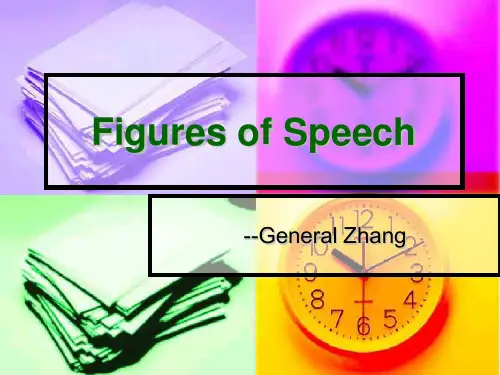
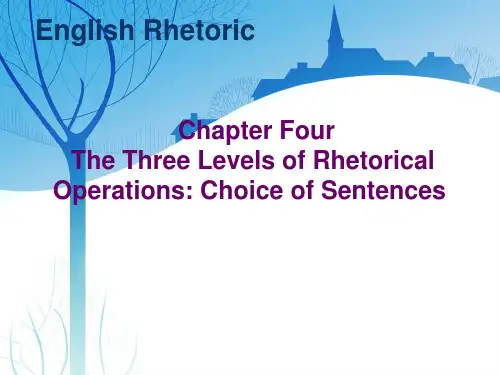
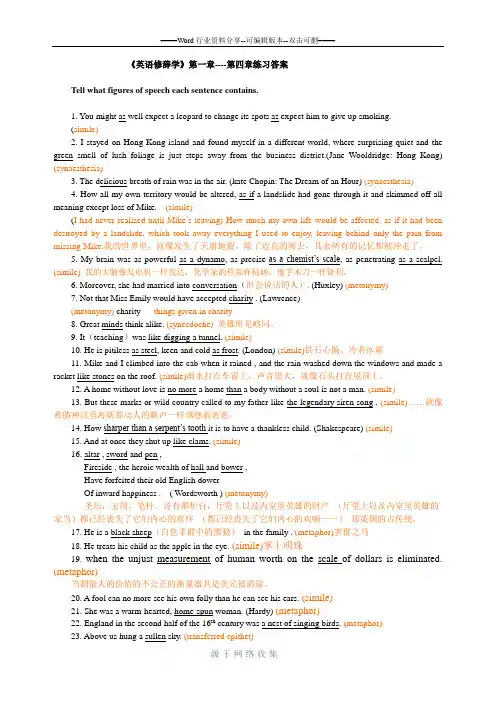
《英语修辞学》第一章----第四章练习答案Tell what figures of speech each sentence contains.1. You might as well expect a leopard to change its spots as expect him to give up smoking.(simile)2. I stayed on Hong Kong island and found myself in a different world, where surprising quiet and the green smell of lush foliage is just steps away from the business district.(Jane Wooldridge: Hong Kong) (synaesthesia)3. The delicious breath of rain was in the air. (kate Chopin: The Dream of an Hour) (synaesthesia)4. How all my own territory would be altered, as if a landslide had gone through it and skimmed off all meaning except loss of Mike. (simile)(I had never realized until Mike’s leaving) How much my own life would be affected, as if it had been destroyed by a landslide, which took away everything I used to enjoy, leaving behind only the pain from missing Mike.我的世界里,就像发生了天崩地裂,除了迈克的离去,其余所有的记忆都被冲走了。
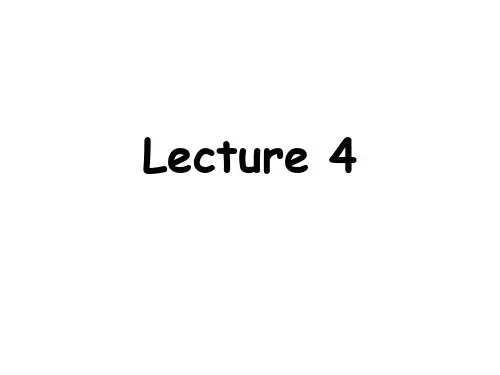
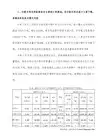
普通高等教育“十五”国家级规划教材现代英语修辞学Moder n English Rhetor ic胡曙中编著上海外语教育出版社图书在版编目(CIP)数据现代英语修辞学/胡曙中编著.—上海:上海外语教育出版社,2004ISBN7-81095-185-8Ⅰ.现…Ⅱ.胡…Ⅲ.英语修辞教材Ⅳ.H315中国版本图书馆CIP数据核字(2004)第014498号早在1982年,我的导师杨小石先生有意要编一本适合我国英语专业使用的英语修辞学教材,为此,他邀请了包括我在内的三位教师一起参加编写,我们商定了编写大纲,也作了具体的分工。
我当时只有35岁,对编写这么一本教材的困难程度并不清楚,但却凭着一股劲,居然勉强地完成了自己那一部分,但是由于他们未能完成自己的部分,我的那一部分最后也就不了了之了。
从那时到现在,时间过去了20多年。
在这20多年中,我读了一些书,作了一些研究,从《英汉修辞比较研究》、《美国新修辞学》到《英语修辞学》,我走了过来。
坦诚地说,前面走过的路不都是一步一个脚印的,但就在这步履艰难的过程中,我逐渐知道了什么是英语修辞,知道了如何来阐释和应用英语修辞。
现在奉献给大家的这本《现代英语修辞学》,承蒙教育部和有关专家的厚爱,被确定为普通高等教育“十五”国家级规划教材。
我把这本书写成一本英语修辞学的入门书,是想回答许多学生提出的问题:“什么是英语修辞学?”“英语修辞学是不是就是研究英语写作?”“英语修辞学是英语专业的课程,还是语言学的课程?”我希望我的这本书能较为满意地回答这些问题。
在这儿,我想概括一下本书的各章内容和目的:第0章导论解释英语修辞的种种意义,并说明本书的目的———对英语修辞现象的描述、应用和阐释第1章影响修辞活动的要素论述信息、使用场合、受话者之间的关系,说明语气如何反映其间的关系第2章词汇的修辞描述英语选字遣词的修辞规律及其应用第3章句子的修辞描述英语连词组句的修辞规律及其应用第4章 段落的修辞 描述英语段落构成的修辞规律及其应用第5章 语篇的修辞 描述英语语篇构成的修辞规律及其应用第6章 语篇的种类 描述语篇的种类及其特点第7章 语体 描述作为修辞活动综合体的语体特征第8章 修辞手段 描述修辞布局和辞格的规律第9章 理论阐释 简述主要的英语修辞理论第10章 传统与发展 回顾英语修辞学的传统,预测其发展本书主要适合英语专业高年级学生和研究生使用。
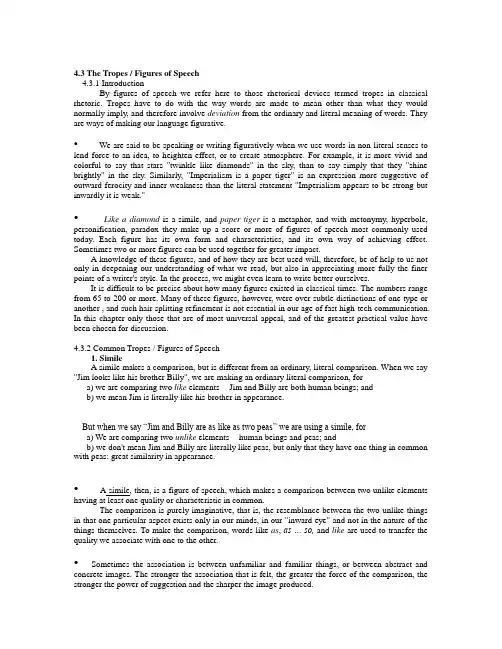
4.3 The Tropes / Figures of Speech4.3.1 IntroductionBy figures of speech we refer here to those rhetorical devices termed tropes in classical rhetoric. Tropes have to do with the way words are made to mean other than what they would normally imply, and therefore involve deviation from the ordinary and literal meaning of words. They are ways of making our language figurative.•We are said to be speaking or writing figuratively when we use words in non-literal senses to lend force to an idea, to heighten effect, or to create atmosphere. For example, it is more vivid and colorful to say that stars "twinkle like diamonds" in the sky, than to say simply that they "shine brightly" in the sky. Similarly, "Imperialism is a paper tiger" is an expression more suggestive of outward ferocity and inner weakness than the literal statement "Imperialism appears to be strong but inwardly it is weak."•Like a diamond is a simile, and paper tiger is a metaphor, and with metonymy, hyperbole, personification, paradox they make up a score or more of figures of speech most commonly used today. Each figure has its own form and characteristics, and its own way of achieving effect. Sometimes two or more figures can be used together for greater impact.A knowledge of these figures, and of how they are best used will, therefore, be of help to us not only in deepening our understanding of what we read, but also in appreciating more fully the finer points of a writer's style. In the process, we might even learn to write better ourselves.It is difficult to be precise about how many figures existed in classical times. The numbers range from 65 to 200 or more. Many of these figures, however, were over-subtle distinctions of one type or another , and such hair-splitting refinement is not essential in our age of fast high-tech communication. In this chapter only those that are of most universal appeal, and of the greatest practical value have been chosen for discussion.4.3.2 Common Tropes / Figures of Speech1. SimileA simile makes a comparison, but is different from an ordinary, literal comparison. When we say "Jim looks like his brother Billy", we are making an ordinary literal comparison, fora) we are comparing two like elements -- Jim and Billy are both human beings; andb) we mean Jim is literally like his brother in appearance.But when we say ―Jim and Billy are as like as two peas’’ we are using a simile, fora) We are comparing two unlike elements -- human beings and peas; andb) we don't mean Jim and Billy are literally like peas, but only that they have one thing in common with peas: great similarity in appearance.• A simile, then, is a figure of speech, which makes a comparison between two unlike elements having at least one quality or characteristic in common.The comparison is purely imaginative, that is, the resemblance between the two unlike things in that one particular aspect exists only in our minds, in our "inward eye" and not in the nature of the things themselves. To make the comparison, words like as,as … so, and like are used to transfer the quality we associate with one to the other.•Sometimes the association is between unfamiliar and familiar things, or between abstract and concrete images. The stronger the association that is felt, the greater the force of the comparison, the stronger the power of suggestion and the sharper the image produced.simile (明喻) 用like等喻词联结两类不同的事物(主体和喻体),以表明相似关系的比喻.主体和喻体: See 李鑫华,pp8-9。

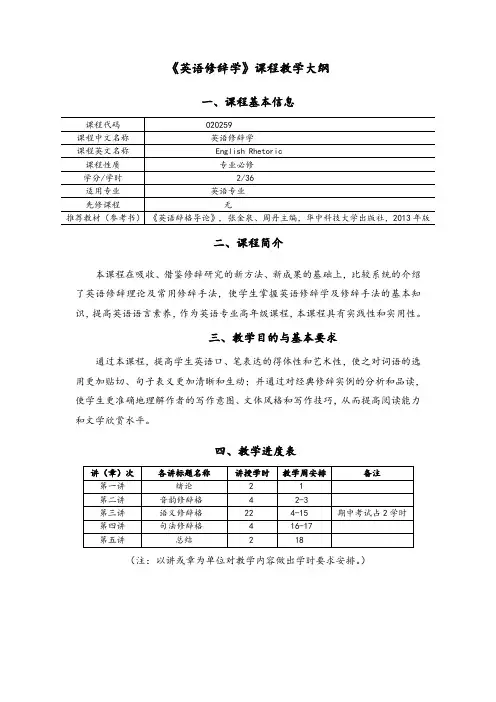
《英语修辞学》课程教学大纲一、课程基本信息课程代码020259课程中文名称英语修辞学课程英文名称English Rhetoric课程性质专业必修学分/学时 2/36适用专业英语专业先修课程无推荐教材(参考书)《英语辞格导论》, 张金泉、周丹主编,华中科技大学出版社,2013年版二、课程简介本课程在吸收、借鉴修辞研究的新方法、新成果的基础上,比较系统的介绍了英语修辞理论及常用修辞手法,使学生掌握英语修辞学及修辞手法的基本知识,提高英语语言素养,作为英语专业高年级课程,本课程具有实践性和实用性。
三、教学目的与基本要求通过本课程,提高学生英语口、笔表达的得体性和艺术性,使之对词语的选用更加贴切、句子表义更加清晰和生动;并通过对经典修辞实例的分析和品读,使学生更准确地理解作者的写作意图、文体风格和写作技巧,从而提高阅读能力和文学欣赏水平。
四、教学进度表讲(章)次各讲标题名称讲授学时教学周安排备注第一讲绪论 2 1第二讲音韵修辞格 4 2-3第三讲语义修辞格 22 4-15 期中考试占2学时第四讲句法修辞格 4 16-17第五讲总结 2 18(注:以讲或章为单位对教学内容做出学时要求安排。
)五、考核方式和成绩评定办法1、考核方式:闭卷考;2、成绩评定办法:平时成绩(包括课堂表现、提交作业、考勤)占30%,期中考试占10%,期末考试占60%六、内容提要第一周英语修辞学概述教学目的:1)了解修辞学定义及修辞学研究的历史;2)了解修辞学学习的意义及课程设置教学重点:修辞学研究的对象及意义教学难点:修辞的定义教学方法:讲授为主,结合学生讨论教学内容:1)修辞学定义2)修辞学研究历史概述3)英语辞格介绍4)英语修辞学学习的意义5)本门课程考核方式课后思考题:英专学生学习英语修辞学的意义授课时数:2第二周音韵修辞格(头韵、元韵)教学目的:理解并掌握头韵、元韵概念与具体运用教学重点:头韵教学难点:头韵、元韵的具体运用教学方法:教师讲授、学生讨论、课堂联系presentation相结合教学内容:1)头韵定义及修辞实例赏析2)元韵定义及修辞实例赏析授课时数:2第三周音韵修辞格(押韵、拟声)教学目的:理解并掌握押韵、拟声的概念与具体运用教学重点:押韵教学难点:押韵、拟声的具体运用教学方法:教师讲授、学生讨论、课堂联系presentation相结合教学内容:1)押韵定义及修辞实例赏析2)拟声定义及修辞实例赏析授课时数:2第四周语义修辞格(摹色)教学目的:理解并掌握摹色的概念与具体运用教学重点:颜色词教学难点:摹色具体运用教学方法:教师讲授、学生讨论、课堂联系presentation相结合教学内容:摹色定义及修辞实例赏析授课时数:2第五周语义修辞格(明喻)教学目的:1)掌握明喻的概念2)掌握明喻的几种常见形式3)了解as...as...类明喻的翻译教学重点:明喻的几种常见形式教学难点:as...as...类明喻的特征及文化内涵教学方法:教师讲授、学生讨论、课堂联系presentation相结合授课时数:2第六周语义修辞格(隐喻)教学目的:1)掌握隐喻的定义2)掌握隐喻的分类3)了解延伸式隐喻的定义教学难点:隐喻的分类教学方法:教师讲授、学生讨论、课堂联系presentation相结合授课时数:2第七周语义层面的修辞格(拟人、双关)教学目的:1)掌握拟人的概念、分类、修辞效果。
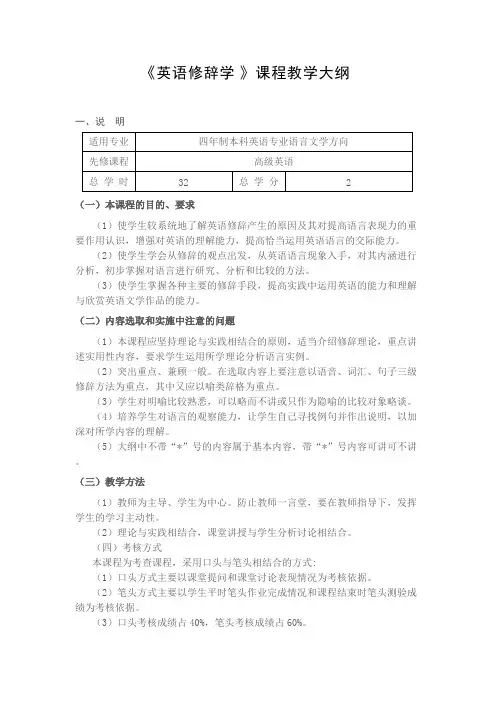
《英语修辞学》课程教学大纲一、说明适用专业四年制本科英语专业语言文学方向先修课程高级英语总学时32总学分2(一)本课程的目的、要求(1)使学生较系统地了解英语修辞产生的原因及其对提高语言表现力的重要作用认识,增强对英语的理解能力,提高恰当运用英语语言的交际能力。
(2)使学生学会从修辞的观点出发,从英语语言现象入手,对其内涵进行分析,初步掌握对语言进行研究、分析和比较的方法。
(3)使学生掌握各种主要的修辞手段,提高实践中运用英语的能力和理解与欣赏英语文学作品的能力。
(二)内容选取和实施中注意的问题(1)本课程应坚持理论与实践相结合的原则,适当介绍修辞理论,重点讲述实用性内容,要求学生运用所学理论分析语言实例。
(2)突出重点、兼顾一般。
在选取内容上要注意以语音、词汇、句子三级修辞方法为重点,其中又应以喻类辞格为重点。
(3)学生对明喻比较熟悉,可以略而不讲或只作为隐喻的比较对象略谈。
(4)培养学生对语言的观察能力,让学生自己寻找例句并作出说明,以加深对所学内容的理解。
(5)大纲中不带“*”号的内容属于基本内容,带“*”号内容可讲可不讲。
(三)教学方法(1)教师为主导、学生为中心。
防止教师一言堂,要在教师指导下,发挥学生的学习主动性。
(2)理论与实践相结合,课堂讲授与学生分析讨论相结合。
(四)考核方式本课程为考查课程,采用口头与笔头相结合的方式:(1)口头方式主要以课堂提问和课堂讨论表现情况为考核依据。
(2)笔头方式主要以学生平时笔头作业完成情况和课程结束时笔头测验成绩为考核依据。
(3)口头考核成绩占40%,笔头考核成绩占60%。
(五)教学内容与学时分配教学章节教学内容学时安排备注1修辞学定义22西方修辞学简史44词语的选择35句子的选择27语音类修辞格48-9句法类修辞格610语义类修辞格611逻辑类修辞格4机动2测验二、大纲内容Chapter 1 What Is Rhetoric?1.1 Rhetoric and oratory1.2 Connotation of rhetoric1.3 Definitions of rhetoric1.4 Five assumptions说明和要求:(1)了解修辞与演说之间的关系(2)修辞学的定义Chapter 2 Brief History of Western Rhetoric2.1 Classical rhetoric (5th c. B.C.---5th c. A.D.)2.2 Rhetoric in the Middle Ages (5th---14th c.)*2.3 Rhetoric in the Renaissance (15th---16th c.)*2.4 New Classical Rhetoric (17th---19th c.)2.5 Contemporary Rhetoric说明和要求:(1)了解西方修辞学产生与发展的历史(2)了解亚里士多德等学者对西方修辞学的贡献(3)了解当今修辞学发展的现状和主要趋势Chapter 4 Choice of Words4.1 Use suitable words4.2 Denotation and connotation4.3 General words and specific words4.4 Abstract words and concrete words4.5 Short words and long words说明和要求:(1)了解词的本义与衍生义(2)了解概括词与特指词的语用功能(3)了解抽象词和具体词的语用功能(4)了解大词和小词的来源和对语体色彩的影响Chapter 5 Choice of Sentences5.1 Types of sentences5.2 Long and short sentences说明和要求:(1)了解不同句子结构的修辞作用(2)了解长句和短句的语用功能Chapter 7 Phonetic Figures of Speech7.1 Alliteration7.2 Assonance7.3 Consonance7.4 Onomatopoeia7.5 Aposiopesis7.6 Apostrophe7.7 Pun说明和要求:(1)本部分从语音在语言中的地位讲起,适当介绍语音学方面的知识,重点提示音韵法在诗歌中所起的重要作用及其对散文、广告等各语体的影响。
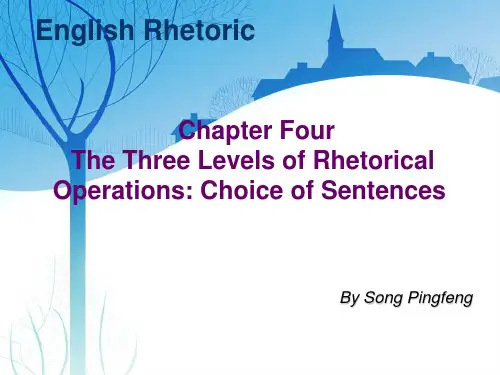
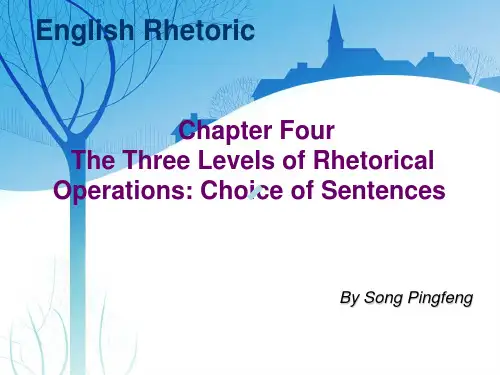
Figures of speech (修辞)are ways of making our language figurative. When we use words in other than their ordinary or literal sense to lend force to an idea, to heighten effect, or to create suggestive imagery, we are said to be speaking or writing figuratively. Now we are going to talk about some common forms of figures of speech.第一部分:Figures of Resemblance and RelationshipSimile(明喻) Metaphor(暗喻) (隐喻) Metonymy(转喻) (借代)Synecdoche(提喻)Personification(拟人)Antonomasia (换称)一Simile(明喻)Simile:(明喻)It is a figure of speech which makes a comparison between two unlike elements having at least one quality or characteristic (特性)in common. To make the comparison, words like as, as...as, as if and like are used to transfer the quality we associate with one to the other. Simile is a comparison between two different things that resemble each other in at least one way. In formal prose the simile is a device both of art and explanation, comparing an unfamiliar thing to some familiar thing (an object, event, process, etc.) known to the reader.1. Simile通常由三部分构成:本体(tenor or subject),喻体(vehicle or reference)和比喻词(comparative word or indicator of resemblance)。
Chapter 4 Figures of SpeechIntroduction•Figures of Speech-- the generic term of any artful deviations from the ordinary mode of speaking or writing•The functions of figures of speech–render our thoughts vividly concrete, and help us to communicate with our audience clearly and effectively; (Logos)–stir emotional responses, carry truth, in Wordsworth's phrase, "alive into the heart by passion"; (Pathos)–elicit admiration for the eloquence of the speaker or writer, exert a powerful ethical appeal. (Ethos)4.1 ClassificationTwo Classification Systems–Corbett and Connors's System of Classification–Walter Nash's Classification System of Figures4.1.1 Corbett and Connors's System of ClassificationTwo main groups: the schemes and the tropes.A scheme (Greek schema, form, shape) involves a deviation from the ordinary pattern or arrangement of words.A trope (Greek tropein, to turn ) involves a deviation from the ordinary and principal signification of a word.The Schemes 布局/形变辞格Schemes of Words1. Adding or subtractingProsthesis (adding a syllable in front of word) e.g. loved -- belovedEpenthesis (adding a syllable in the middle of word) e.g. visiting -- visitatingProparalepsis (adding a syllable at the end of word) e.g. climate -- climatureAphaeresis (subtracting a syllable from the beginning of word) e.g. beneath –…neath, It is - 'tis, advantage - vantageSyncope (subtracting a syllable from the middle of word) e.g. prosperous -- prosprousApocope (subtracting a syllable from the end of word) e.g. evening – even, cinematograph - cinema2. Exchanging soundsmetathesis (transposition of letters in a word) e.g. clasp -- clapsantisthecon (change of sound) e.g. wrong -- wrangSchemes of Construction1. Schemes of BalanceParallelism (similarity of structure in a pair or related words, phrases, or clauses)Antithesis (the juxtaposition of contrasting ideas, often in parallel structure)2. Schemes of unusual or inverted word order (hyperbaton )Anastrophe (inversion of the natural or usual word order)Parenthesis (insertion of some verbal unit in a position interrupts the normal syntactical flow of thesentence)Apposition (placing side by side two co-ordinate elements, second of which serves as an explanation or modification of the first)3. Schemes of OmissionEllipsis (deliberate omission of a word or of words which are readily implied by the context) Asyndeton (deliberate omission of conjunctions between series of related clauses)4. Schemes of RepetitionAlliteration (repetition of initial consonants in two or more adjacent words)Assonance (repetition of similar vowel sounds, preceded and followed by different consonants, in the stressed syllables of adjacent words)Anaphora (repetition of the same word or group of words at the beginnings of successive clauses) (a...)(a...)Epistrophe (repetition of the same word or group of words at the ends of successive clauses) (...a) (...a)Epanalepsis (repetition at the end of a clause of the word that occurred at the beginning of the clause) (a …a)Anadiplosis (repetition of the last word of one clause at the beginning of the following clause) (…a, a …)Climax (arrangement of words, phrases, or clauses in an order of increasing importance) Antimetabole (repetition of words, in successive clauses, in reverse grammatical order)Chiasmus (reversal of grammatical structures in successive phrases or clauses)Polyptoton (repetition of words derived from the same root)The Tropes 辞格/变异辞格Metaphor(an implied comparison between two things of unlike nature that yet have something in common)Simile(an explicit comparison between two things of unlike nature that yet have something in common)Synecdoche (a figure of speech in which a part stands for the whole)Metonymy (substitution of some attributive or suggestive word for what is actually meant)Puns (generic name for those figures which make a play on words)1. Antanaclasis (repetition of a word in two different senses)2. Paronomasia (use of words alike in sound but different in meaning)3. Syllepsis(use of a word understood differently in relation to two or more other words, which it modifies or governs)Anthimeria (the substitution of one part of speech for another)Periphrasis (substitution of a descriptive word or phrase for a proper name or of a proper name for a quality associated with the name)Personification (Prosopopoeia) (investing abstractions or inanimate objects with human qualities or abilities)Hyperbole (the use of exaggerated terms for the purpose of emphasis or heightened effect)Litotes (deliberate use of understatement, not to deceive someone but to enhance the impressiveness of what we say)Rhetorical Question (erotema) (asking a question, not for the purpose of eliciting an answer but for the purpose of asserting or denying something obliquely)Onomatopoeia (use of words whose sound echoes the sense)Oxymoron (the yoking of two terms that are ordinarily contradictory)Paradox (an apparently contradictory statement that nevertheless contains a measure of truth)See 李鑫华,pp8- 17 for reference4.1.2 Walter Nash's Classification System of FiguresWalter Nash, British linguist, has adopted a linguistic approach toward the classification of the figures. For Nash, The word figure is the super-ordinate term, applicable to any rhetorical device. Scheme will refer to figures of word-order and syntactic patterning; trope will refer to figures that play on the sense of words.•We shall further distinguish between tropes that confine their play to a single word or phrase, and those that pervade longer stretches of discourse; these last we shall call modes调式. There are thus figures of syntax and figures of semantics, the latter being roughly divisible into word-semantics and discourse semantics. The proposed hierarchy of terms is represented in the following sketch:FIGURESCHEMES TROPE(syntax. (semantic)E.g. climax)(word meaning, (discourse sense,e.g. metaphor) e.g. irony)4.1.3 The classification of The New Encyclopedia Britannica1. figures of resemblance or relationship e.g. metaphor, simile2. figures of emphasis or understatement e.g. hyperbole, litotes3. figures of sound e.g. alliteration4. verbal games and gymnastics e.g. pun, anagram 字谜5. errors e.g. malapropism语词的滑稽误用,飞白, periphrasis 折绕4.1.4 Other classificationsLinguistically–Phonetical–lexical–StructuralSee 李鑫华,p8Aesthetically1. Figures related to sound and color声色美2.Figures related to resemblance and relationship3. Figures related to balance4. Figures related to emphasis5. Figures related to change6. Figures related to vagueness4.2 Syntactic schemes4.2.1 Syntactic Schemes of BalanceGeneral RemarksBalance in sentence construction is based on the principle that ideas of the same importance should be expressed in the same grammatical form to enhance clarity and coherence, by giving them equal weight.E.g.(1) Crafty men condemn studies, simple men admire them, and wise men use them.(Francis Bacon: " Of Studies")(2) Penny wise; pound foolish.•The chief schemes of balance are Parallelism, Antithesis, Chiasmus (交错配列), and its variation Antimetabole (颠倒重复). These are now discussed below, individually.1. ParallelismIn parallel construction it is necessary to balance word for word (noun with noun, verb with verb, adjective with adjective, etc.), phrase with phrase, clause with clause, sentence with sentence.Compare: Are they parallels?a. The child was pretty and had brains.b. The child was pretty and intelligent.c. He sat down and was beginning to work.d. He sat down and began to work.•Parallelism is regularly employed in the listing of facts, ideas, events etc., and the parallel elements may range from a minimum of two to any number required.•To make the parallelism clear, it is essential to repeat, as the case demands, the marker of the parallelism, such as an article, a preposition, the to of an infinitive, or the introductory word of a main or subordinate clause.E.g.(3) She was a good hostessand an accomplished pianist.(4) You can go there on foot,by busor by train.(5) It is important to know how to studyand to learn how to plan one's time.(There are two sets of parallelisms here.)(6) Do you know who will comeand when they will arrive?The careless omission of such markers will lead to awkward, if not unidiomatic sentences.E.g.(7) (×) I will wait until you call or shecomes.(√) I will wait until you call oruntil she comes.(8) (×) She is a swimmer and artist.(√) She is a swimmer and an artist.However, it is permissible to leave out such markers if their omission does not cause ambiguity,awkwardness, or if they do not sound unidiomatic.E.g.(9) She likes to read, swim, and play tennis.(10) We can go there by bus, train or plane.Parallel constructions are also introduced by correlative such as either ... or, neither ... nor, both … and, not only … but also, whether … or,and rathe r … than.E.g.(11) You may either go with them or stay behind.(12) She was both their friend and teacher.(13) I would rather go shopping than visit the parks.•From the above examples, we can see that parallelism involves balancing the structural elements of a sentence. Very often, however, repetition is used with parallelism to emphasize the equal importance and weight of the parallel parts. E.g.(14) We live in deeds, not years;in thoughts, not breaths;in feelings, not in figures on a dial.(P. J. Bailey: Festus, v)(15) ... and that government of the people, by the people, for the people shall not perish from the earth.(Abraham Lincoln: "Gettysburg Address")(16) Is not a Patron, my Lord, one who looks with unconcern on a man struggling for life in the water, and, when he has reached ground, encumbers him with help?为……所累The notice which you have been pleased to take of my labours, had it been early, had been kind, but it has been delayed till I am indifferent, and cannot enjoy it; till I am solitary and cannot impart it; till I am known, and do not want it.(Samuel Johnson: "Letter to Lord Chesterfield")•In conclusion, we will say parallelism is one of the most frequently used of all English rhetorical devices, and anyone who has learnt to use it with ease in all its variety will find it an invaluable aid in making his/her writing clear and effective.2. AntithesisAntithesis is the deliberate arrange-ment of contrasting words or ideas in balanced structural forms to achieve force and emphasis.Speech is silver; silence is golden.Not that I loved Caesar less, but that I loved Rome more.-- Shakespeare: Julius CaesarIt takes a great deal of history to produce a little literature. -- Henry JamesI had walked into that reading room a happy healthy man. I crawled out a decrepit wreck.-- Jerome K. Jerome: Three Men in a Boat•Sometimes a whole passage can be made up of contrasts, and this extract from Ecclesiastes is a well-known example, which emphasizes a point of view, an idea:There is a time for everything, and a season for every activity under heaven: (Ecclesiastes)a time to be born and a time to die,a time to plant and a time to uproot,a time to kill and a time to heal,a time to tear down and a time to build,a time to weep and a time to laugh,a time to mourn and a time to dance,…a time to be silent and a time to speak,a time to love and a time to hate,a time for war and a time for peace.It was the best of times, it was the worst of times, it was the age of wisdom, it was the age of foolishness, it was the epoch of belief, it was the era of incredulity, it was the season of Light, it was the season of Darkness, it was the spring of Hope, it was the winter of Despair, we had everything before us.3. Chiasmus and Antimetabole(交错配列,颠倒重复).Chiasmus is a device that consists of two balanced statements, the second of which reverses the order of the words in the first, with or without a repetition of words.(1) We live to eat, not eat to live.(Here the key words in the first statement are repeated, and reversed in order in the second. This is called antimetabole.)(2) He was an angel on the surface, but a t heart a knave.(Here there is no repetition of words; but the positions of the nouns and adverbials are reversed. This is called chiasmus.)(3) Let us never negotiate out of fear, but let us never fear to negotiate. (chiasmus)-- J.F. Kennedy(4) And so, my fellow Americans, ask not what your country can do for you; ask what you can do for your country. (antimetabole)-- J.F. KennedySimilar Chinese device is called “回环”, for example:(1)啊呀啊呀,真实愈有钱,便愈是一毫不肯放松,愈是一毫不肯放松,便愈有钱……(鲁迅《故乡》)(2)“人家说了再做,我是做了再说。
英语修辞学Teaching material 4 for Ss3.2 Lexical Devices3.2.1 IntroductionIn this section we will deal with two main types of lexical devices. One is lexical options, or the way writers choose their words to express their ideas clearly and effectively, in the appropriate context and situation. The other is lexical repetition, or the way writers repeat words for artistic and stylistic effect.1. General RemarksWhen we say \ we really imply that words have power. A large vocabulary, alone,however,does not give one power with words. It is one's stock of vocabulary plus the knowledge of how to use words correctly and appropriately in the right place and to the right person that gives one the freedom and ability to influence with words.The lexical options are many and varied because:?The English vocabulary is rich, heterogeneous and cosmopolitan. ?The wealth of synonyms, and the subtleShades of meaning between synonymous words, makes the making of choices sometimes even difficult.?The English language, moreover, has greatly changed from what it was in Shakespeare's time, oreven in Dickens's time.Below is a discussion of major lexical options that have prevailed to this day.2. Short Words or Long WordsShort words: monosyllabic words of Anglo-Saxon originLong words: polysyllabic words of Latin, French or Greek origin.The English vernacular has a large number of monosyllabic words. These words were once considered not conducive (helpful) to elegant, scholarly orartistic expression. On the other hand, the abundant use of polysyllabic words often makes for a heavy cumbersome effect, however learned the subject or tone.The decision to use a short word or a long one is not always a simple one. There are many factors involved. For one thing, words have other qualities besides shortness or longness. They have sound and meaning and associations.Shakespeare knew the magic of monosyllabic words if used with an ear to their sound, sense and �Dtripping‖ rhythm.Hemingway also knew how to use short words to great effect, setting them off with a sprinkling of longer ones, as the following extracts from The Snows of Kilimanjaro show:�DThe cot the man lay on was in the wide shade of a mimosa含羞草tree and as he looked out past the shade on to the glare of the plain there were three of the big birds squatted obscenely, while in the sky a dozen more sailed, making quick-moving shadows as they passed.‖\right. Now he would not care for death. One thing he had always dreaded was the pain. He could stand pain as well as any man, until it went on too long, and wore him out, but here he had something that had hurt frightfully and just when he had felt it breaking him, the pain had stopped.\In this extract, we can see the dying man is in no condition for laborious thinking. The short simple words come without effort to his mind.Short monosyllabic words are also very forceful in persuasive writing or oratory. Winston Churchill's \ spoken as he took over leadership of theBritish anti-Fascist struggle in WWII are well known. See also John F. Kennedy‘s �DInaugural Address‖.However, it must be admitted that there are many events and situations in life which require fuller descriptions than monosyllables can provide.The passage below contain words of more than one syllable. Notice the different rhythm of the prose, the different rhetorical effect, the careful choice and arrangement of the short and long words.While enjoying a month of fine weather at the sea-coast, I was thrown into the company of a most fascinating creature, a real goddess, in my eyes, aslong as she took no notice of me. I \told my love\head and ears; she understood me, at last, and looked a return -- the sweetest of all imaginablelooks -- and what did I do? I confess it with shame -- shrunk icily into myself, like a snail, at every glance retired colder and farther; till,finally, the poor innocent was led to doubt her own senses, and, overwhelmed with confusion at her supposed mistake, persuaded her mamma to decamp.(Emily Bronte: Wuthering Heights)3. Common Words or Learned WordsLearned Words: Latinisms (mainly to Latinate words )Common Words: words of native origin (vernacular/English words of Anglo-Saxon origin) + words borrowed from other-than-Latin languagesIn the history of the English language, Latin was generally acknowledged and accepted as the language of learning and scholarly discussion, and was a compulsory subject in schools and universities. The choice between commonwords and learned words was therefore originally a choice between vernacular English and Latin words, and in course of time English won out, and Latinisms and \Today, learned words still refer mainly to Latinate words, but commonwords no longer refer purely to English words of Anglo-Saxon origin. Thechoice of one's diction is, of course, determined by many factors. The rule is to suit one's diction to the occasion, and not to mix things up. E.g.(1) \. Procrastination is the thief of time. Collar him! \拖延就是浪费时间。